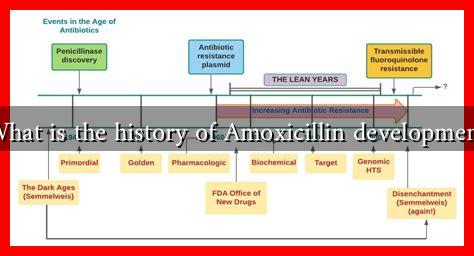-
Table of Contents
The History of Amoxicillin Development
Amoxicillin, a widely used antibiotic, has played a crucial role in the treatment of bacterial infections since its introduction in the 1970s. This article delves into the history of amoxicillin development, exploring its origins, the scientific breakthroughs that led to its creation, and its impact on modern medicine.
Origins of Penicillin
The story of amoxicillin begins with the discovery of penicillin by Alexander Fleming in 1928. This groundbreaking discovery marked the dawn of the antibiotic era, as penicillin proved effective against a variety of bacterial infections. However, it wasn’t until the 1940s that penicillin was mass-produced and widely used, thanks to the efforts of scientists like Howard Florey and Ernst Boris Chain.
The Birth of Amoxicillin
Amoxicillin is a derivative of penicillin, specifically a member of the aminopenicillin class. It was developed in the early 1970s by scientists at Beecham Research Laboratories, which is now part of GlaxoSmithKline. The goal was to create a more effective antibiotic with a broader spectrum of activity and improved pharmacokinetic properties.
Key Developments in Amoxicillin’s Creation
- Modification of Penicillin: Researchers aimed to enhance the stability and absorption of penicillin. By modifying its chemical structure, they created amoxicillin, which is more effective against certain bacteria.
- Broad Spectrum Activity: Amoxicillin was designed to combat a wider range of bacteria, including both Gram-positive and Gram-negative organisms, making it a versatile treatment option.
- Oral Bioavailability: One of the significant advantages of amoxicillin over its predecessors is its high oral bioavailability, allowing for effective treatment without the need for intravenous administration.
Approval and Market Introduction
Amoxicillin was first approved for medical use in the United Kingdom in 1972 and subsequently gained approval in the United States in 1974. Its introduction to the market was met with enthusiasm from healthcare professionals due to its effectiveness and safety profile.
Impact on Public Health
Amoxicillin quickly became a staple in the treatment of various infections, including:
- Respiratory tract infections
- Ear infections
- Urinary tract infections
- Skin infections
According to the World Health Organization (WHO), amoxicillin is included in the WHO Model List of Essential Medicines, highlighting its importance in global health.
Challenges and Resistance
Despite its success, the rise of antibiotic resistance has posed significant challenges for amoxicillin and other antibiotics. Overuse and misuse of antibiotics have led to the emergence of resistant strains of bacteria, making some infections harder to treat. The Centers for Disease Control and Prevention (CDC) has reported that antibiotic resistance is a growing public health threat, emphasizing the need for responsible antibiotic use.
Case Studies on Resistance
Several case studies illustrate the impact of antibiotic resistance on amoxicillin’s effectiveness:
- Streptococcus pneumoniae: This bacterium has shown increasing resistance to amoxicillin, complicating treatment for pneumonia and other infections.
- Escherichia coli: Resistance to amoxicillin has been documented in urinary tract infections, leading to treatment failures.
Future of Amoxicillin
As the medical community grapples with antibiotic resistance, research continues into new formulations and combinations of amoxicillin to enhance its efficacy. Ongoing studies aim to understand the mechanisms of resistance and develop strategies to combat it.
Conclusion
The development of amoxicillin represents a significant milestone in the history of medicine. From its origins in penicillin to its widespread use today, amoxicillin has transformed the treatment of bacterial infections. However, the challenges posed by antibiotic resistance remind us of the importance of responsible antibiotic use and ongoing research. As we look to the future, the legacy of amoxicillin will continue to shape the landscape of infectious disease treatment.
For more information on antibiotic resistance and its implications, visit the CDC’s Antibiotic Resistance page.


